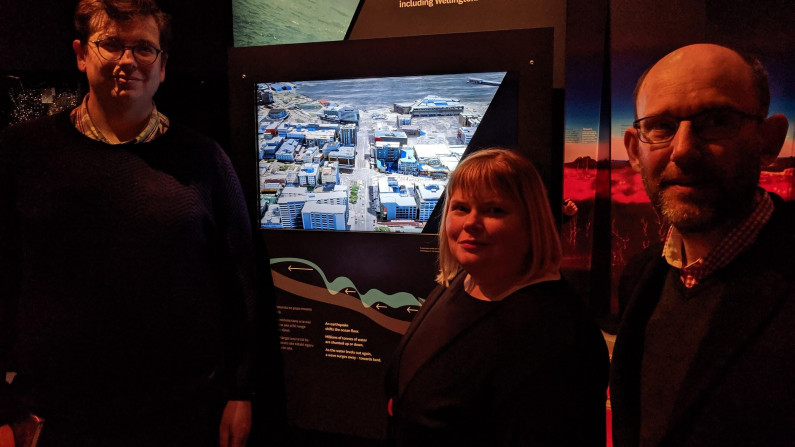
Serendipity, the occurrence and development of events by chance in a happy or beneficial way, is often touted as an intrinsic value of open data. In short, open data allows for serendipitous connections between a need and a solution to be made with as few hurdles as possible.
Sean Audain and the Wellington City Council (WCC) Innovation team have, for many years, been releasing council-held data to the public. They’ve also been working on a 'cyber twin' of Wellington City which allows various departments and councillors to visualise the decisions they are making, see the options available to them, and consider 'what if?' scenarios.
Bringing this cyber twin of the city to life required a computer model of the city – buildings, streets, parks, harbour, ...everything. So Sean and his team built one. Now they have a 3D model of Wellington City that can be manipulated, have layers added or removed, and flown through with just a few clicks of the mouse. The model has since been used in various WCC exhibitions, many of which were covered in the media.
One of those media articles caught the eye of the team at Museum of New Zealand Te Papa Tongarewa (Te Papa) that had been working to revitalise and re-frame the museum's long-standing nature exhibit. Many months of work have resulted in a much more interactive and engaging exhibition space - Te Taiao Nature.
But without WCC’s cyber twin city, a key element of the experience might have been missing.
The Te Papa team wanted to include a tsunami exhibit that allowed visitors to create their own mini-tsunami and explore the physics behind such devastating events. To localise the exhibit they asked GNS Science to create a visitor friendly version of animated data visualisations that would show what a tsunami event could look like around the south coast of the North Island.
The visualisation worked well, but was very technical. The Te Papa team were looking for more than scientific information – they wanted emotional engagement with the exhibit. A tsunami event is one that should engender a very emotional reaction.
The team were encouraged by the WCC 3D model but were worried it would be too costly for the exhibit. But, to their delight and surprise, they discovered the entire model is based on open data! Anyone can use it, anyone can take it, modify it, and apply it to their own needs.
The team duly did, translating their GNS model and putting it into the 3D model to truly bring a Wellington tsunami to life.
It’s been guesstimated that it could have cost as much as $100,000 to create, from scratch, an accurate 3D model of Wellington with tsunami special effects. However, through the power of open data, Te Papa was able to produce a realistic, accurate, and engaging view of a tsunami event in Wellington City.
Serendipitous connections and the use of freely available data truly can remove the obstacles to success – in this case raising awareness of the very real threat of tsunamis, and encouraging citizens and visitors to be prepared. That value is priceless.
https://data-wcc.opendata.arcgis.com/datasets/9c39b3bcc9d24358a89c20fcffd909b7
https://data-wcc.opendata.arcgis.com/
Victoria Leachman, Te Papa Rights Manager, victoria.leachman[at]tepapa.govt.nz
Sean Audain, Wellington City Council City Innovation Lead, sean.audain@wcc.govt.nz
Thanks to Sean Audain from the Wellington City Council, and Amos Mann and Victoria Leachman from Te Papa for their time and assistance in the preparation of this story.
Te Papa thanks Tim Rastall for technical support and providing an Unreal version of the WCC 3D Wellington model.
Photo, from left to right: Sean Audain (WCC), Victoria Leachman (Te Papa), Amos Mann (Te Papa)
